Tracking is a skill that's often applied to wilderness locations. Hunters use it to follow wild game, search and rescue personnel use it to find lost hikers, and law enforcement personnel use it to track fugitives or human traffickers in remote areas. In previous issues, we wrote about tracking and counter-tracking lessons learned from Greenside Training classes in the forests of northern Michigan and the Arizona desert. Although these wilderness-oriented skills are important, we can't overlook the fact that more than 85% of Americans live in urban or suburban areas. So how does tracking translate to the concrete jungle? This is the question that led Freddy Osuna, former USMC Scout Sniper and founder of Greenside Training, to develop his Grayside Hunter course.
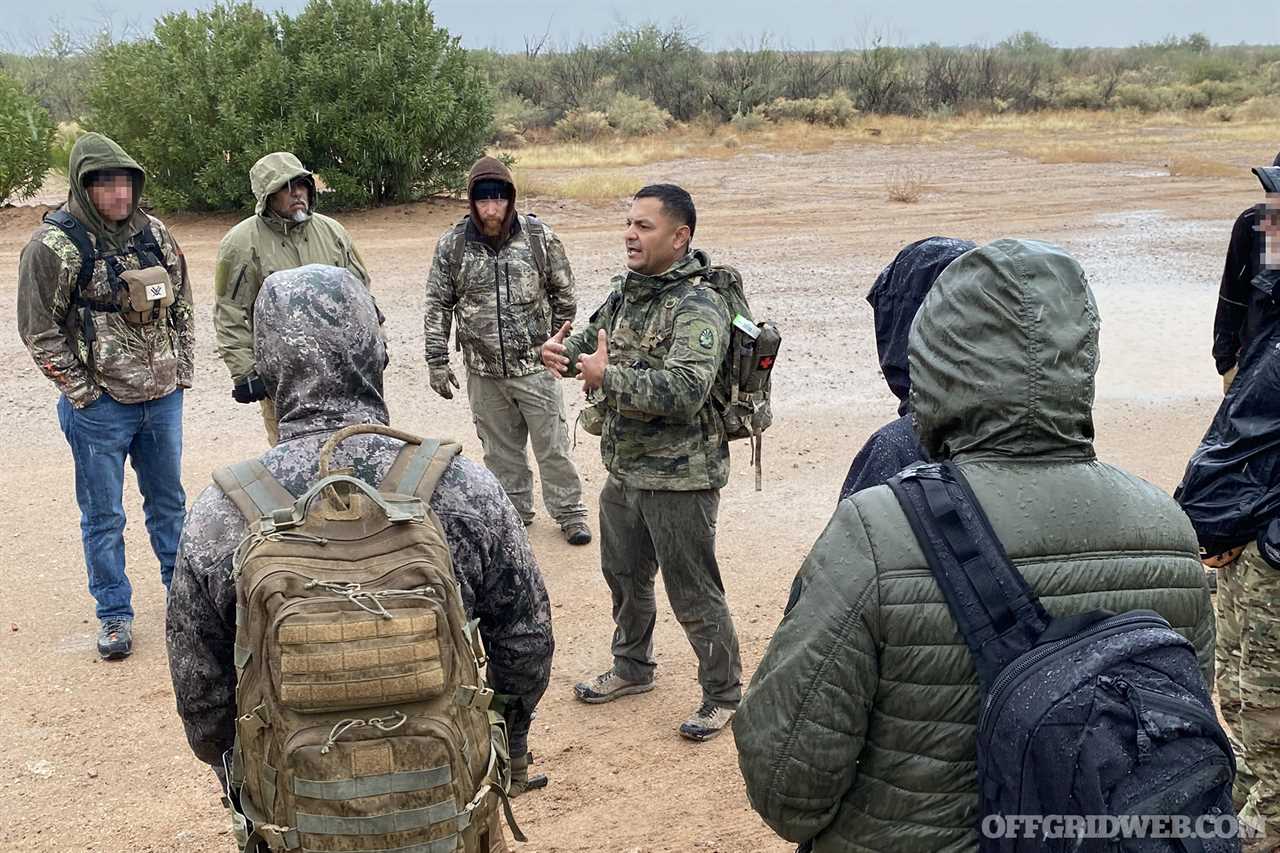
Above: Rain can be helpful or harmful to trackers, depending on the situation. Soft mud makes footprints more pronounced in rural areas, but can wash them away in an urban setting.
Greenside Training Grayside Hunter Course
Osuna recommends students take one of his wilderness tracking courses before moving on to the Grayside Hunter Urban Tracking curriculum. Although it's not considered a “Level 2” class, it builds on many elements of wilderness tracking, and it's undeniable that urban tracking is more challenging (as we would soon learn). As Osuna puts it, “Highly evasive targets exist in highly evasive terrain.” A huge 14-point buck in the forest and a hardened career criminal in the city are both “the professors of their domain.” They've developed a heightened awareness of their surroundings, and they won't stick around for long if something feels out of place. This is the challenge you're up against if you're attempting to track either one without being noticed.
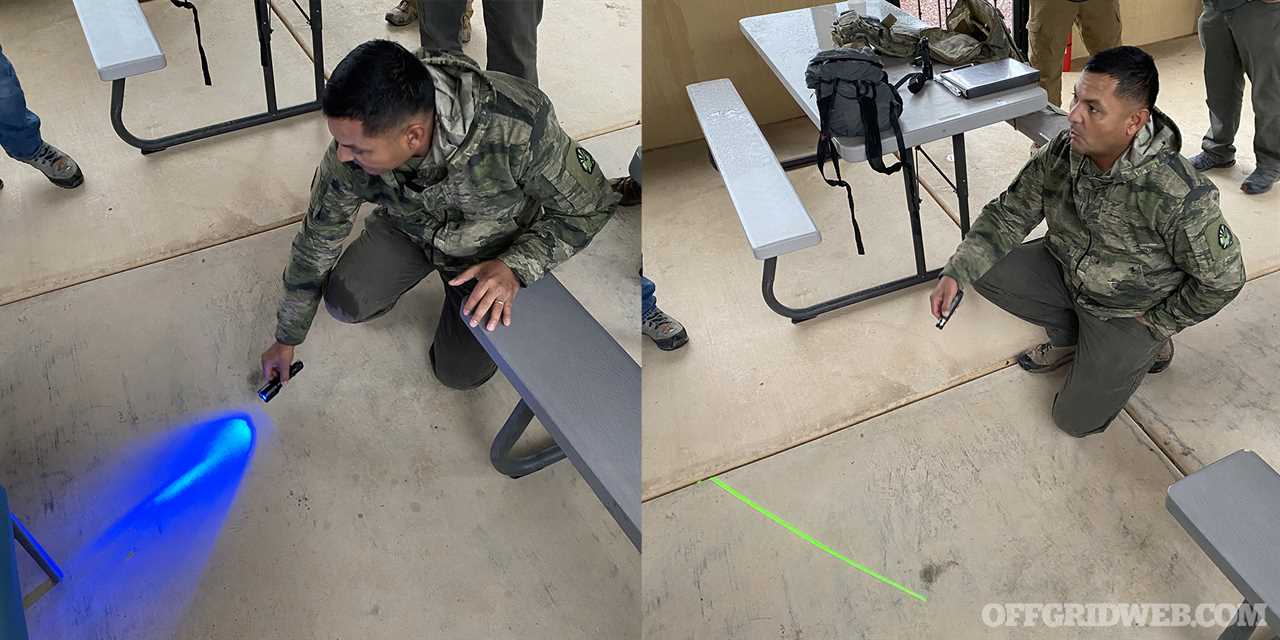
Above: Osuna carries a few tools to make tracks clearer, such as a powerful multi-colored LED light and a green Z-Bolt laser. The latter item was designed to help explosive ordnance disposal (EOD) techs spot tripwires, but he uses it to identify breaks in vegetation.
The course began with a refresher on tracking fundamentals in a rural setting, namely the Sonoran Desert outside Tucson, Arizona. In the wilderness, your target may leave behind spoor (the Dutch word for tracks) in track traps such as patches of mud and soft dirt on trails.
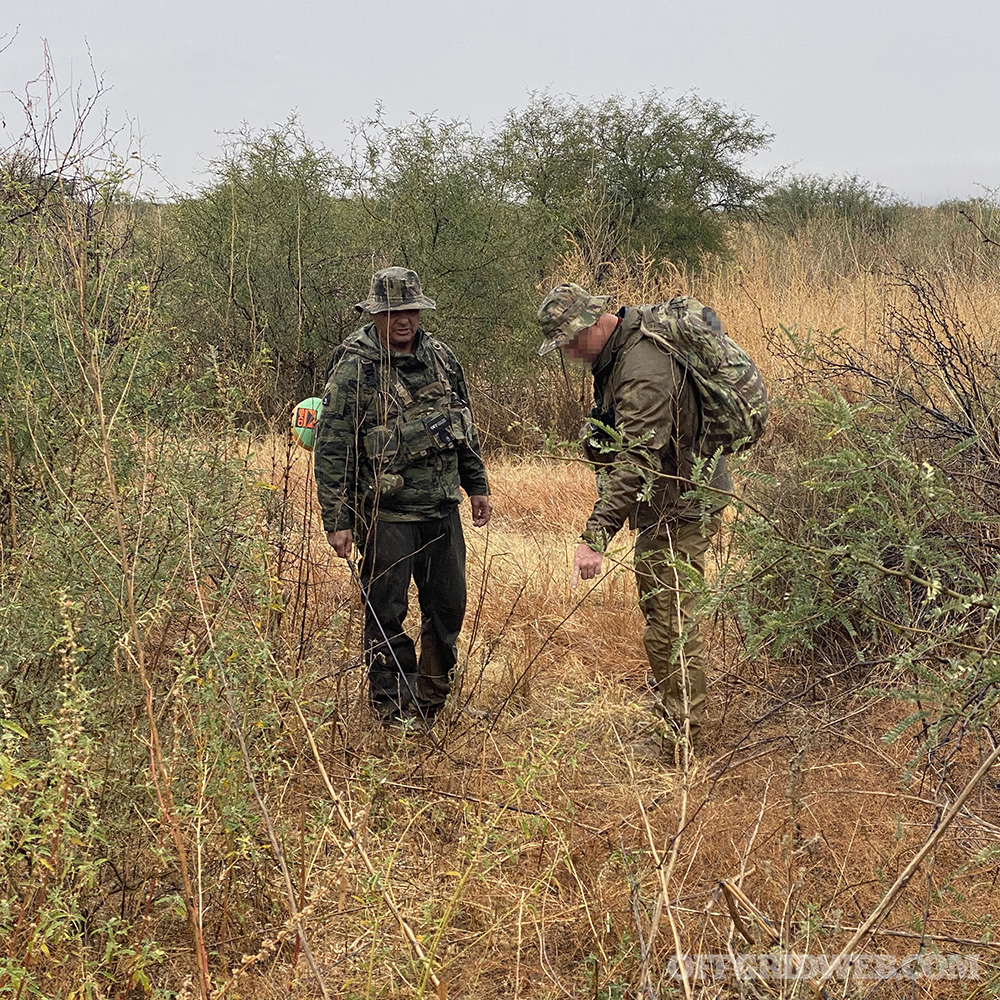
Above: In wilderness settings, disturbances in soil and vegetation are relatively easy to identify for an experienced tracker. These malleable substrates are rarer in urban areas.
For urban areas full of hard concrete and asphalt, these track traps are less common but more significant. For example, a target might cut a corner and leave a footprint in grass near the sidewalk, cross a muddy median, or step into an oil patch left behind by a vehicle, indicating their direction of travel. Pay attention to other disturbances in the natural scenery — just as bird calls can alert us to a target in the forest, dogs barking or nosy neighbors peering over their fences can alert us to targets in the city. Security camera footage may also be obtainable if your social engineering skills are sufficient to convince the camera owner to give it up.
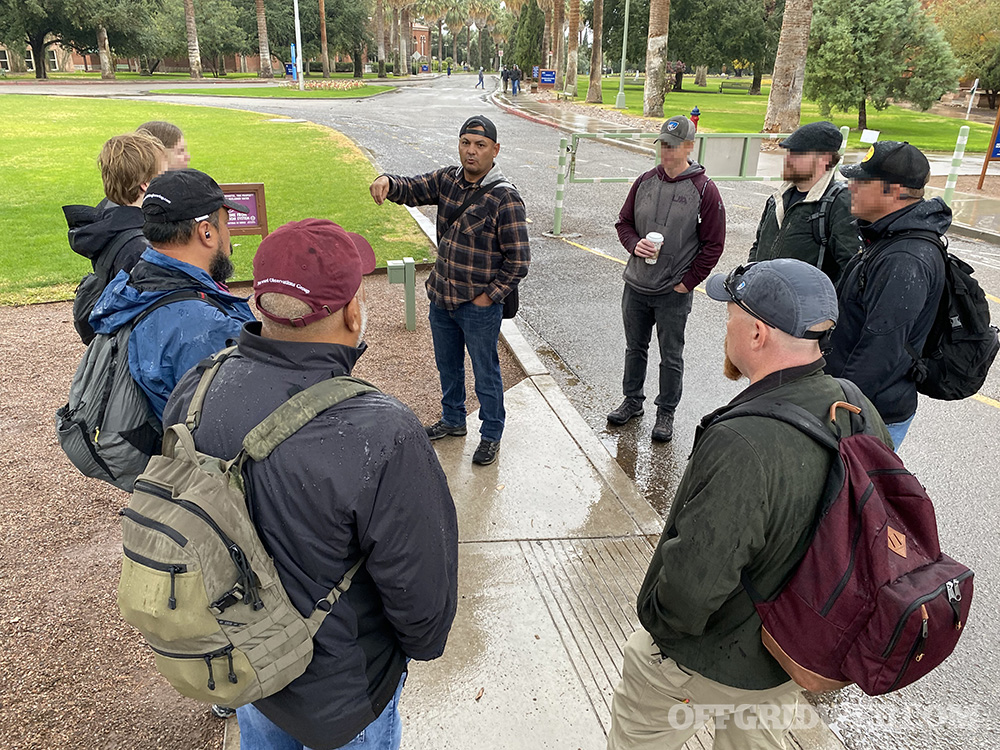
On day two of the Grayside Hunter class, we met in downtown Tucson for an urban tracking exercise. All of the students split up into small teams, since working together is especially valuable in the chaotic and challenging urban environment. We used cell phones and radios to stay in touch, and subdivided our teams into A and B units to cover more ground. Our goal was to track a fictitious criminal, alias Sevryn, who was affiliated with a local drug trafficking network. We knew this bearded mid-40s male would be meeting with contacts throughout the city, and we learned his first meeting was with a younger man in Nike combat boots. One team set off after Sevryn, and the other followed his contact, who we nicknamed Nike.
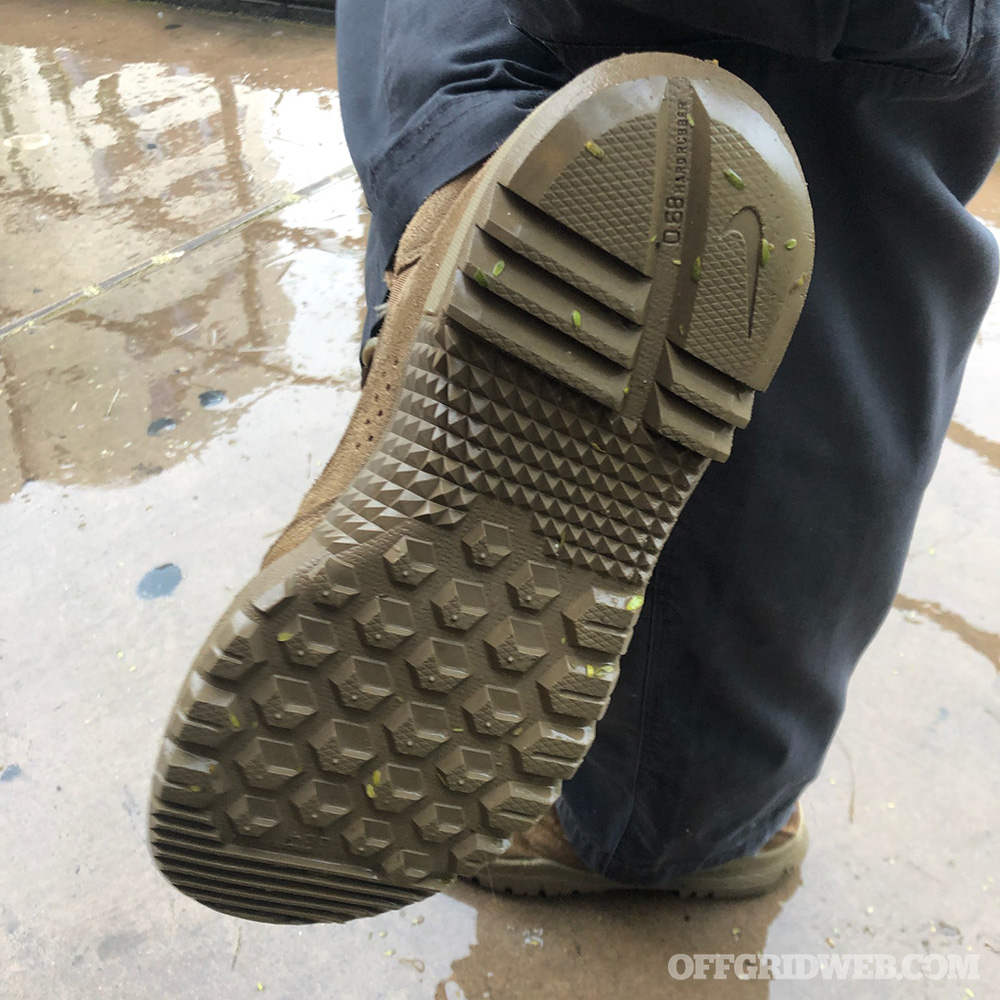
Although we were able to find a few of the distinctive Nike boot prints on muddy sidewalks and medians, and some transference of that mud onto a nearby lawn, drizzling rain and the nonstop activity of an urban environment soon caused us to lose the trail. We moved in a grid pattern, expanding out in every direction from last known boot print locations, but we couldn't find anything. This is the reality of urban tracking — you won't always be successful, especially when Mother Nature gets in the way.
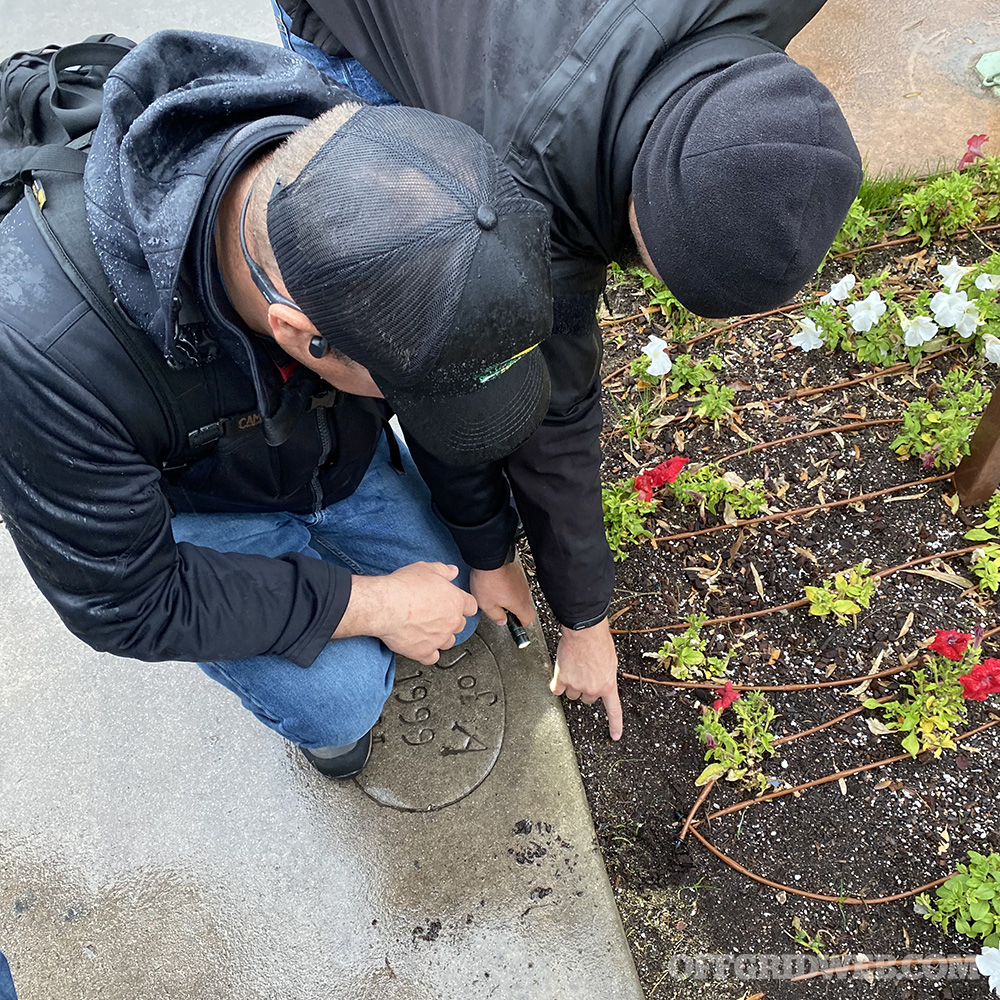
Thankfully, a piece of intel came in from the other team, directing us to a multi-story parking garage. After surveilling a nearby intersection, we spotted Sevryn entering a restaurant to meet with a blonde woman. Carefully observing the scene through our binoculars, we could see he slid her a cell phone and paid for his drink with a credit card before leaving. The method of payment is potentially traceable by law enforcement, and it indicates he wasn't concerned enough about that fact to pay in cash. We took notes on what we saw and cross-checked it with other observers.
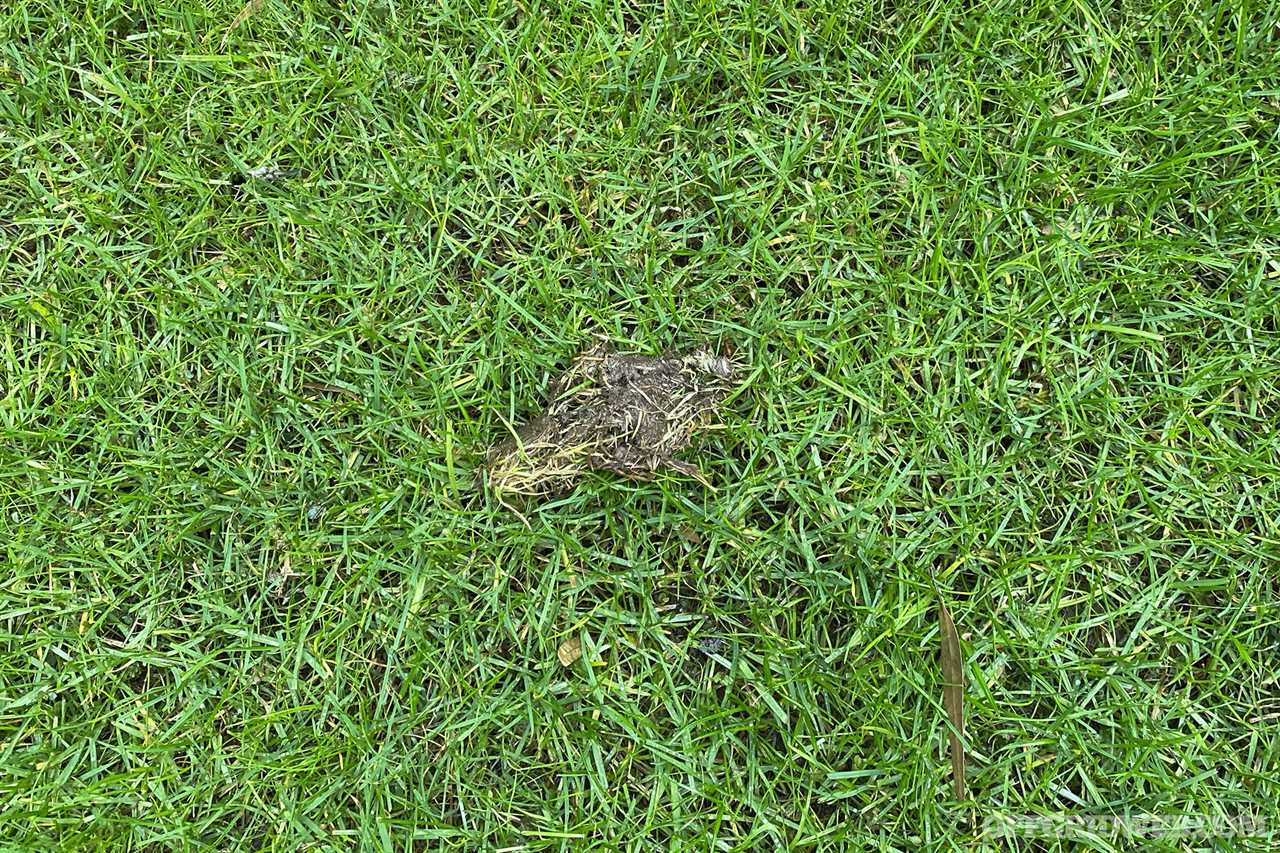
Above: An example of transference. This mud was cast off from a boot as its wearer cut across this lawn.
Lessons Learned
Unless you're a law enforcement officer, you'll probably never need to covertly follow a drug trafficker and his accomplices, but the awareness and observation skills derived from this Grayside Hunter tracking exercise are relevant to anyone who lives in a city. While searching for traces of our fictional bad guy, we noticed signs of real crime and drug activity in the area — broken glass on the ground from car burglaries, gang tags on bus stops, and scraps of aluminum foil coated in black tar heroin residue. If you live in or frequently visit a city, you may never notice these small details, but paying attention to them can help you discern potential threats and danger areas.
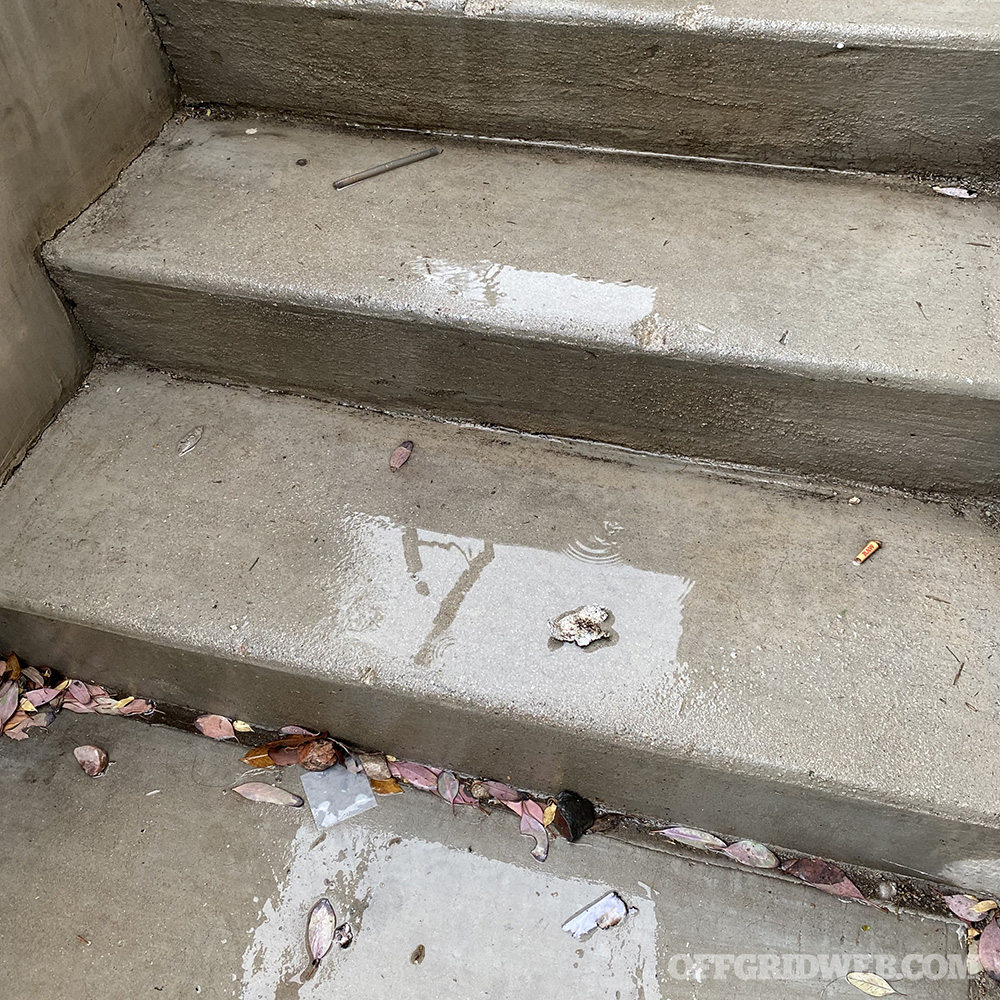
Above: Most people wouldn't give this litter a second glance. But a trained observer will recognize the clear signs of drug activity in this area, which should lead to a heightened sense of caution regarding theft and violent crime.
Grayside Hunter was a fun experience, and it exposed us to the challenges of tracking someone through a city. Unlike rural environments, where footprints, matted foliage, and broken twigs are relatively common, urban environments may only offer a single piece of spoor every few blocks. This is why it's so important to work as a team, because five sets of eyes are much better than one. If you're interested in trying your hand at urban tracking, check GreensideTraining.com for upcoming class dates.
The post Grayside Hunter: Urban Tracking in the Concrete Jungle appeared first on RECOIL OFFGRID.
By: Patrick McCarthy
Title: Grayside Hunter: Urban Tracking in the Concrete Jungle
Sourced From: www.offgridweb.com/preparation/grayside-hunter-urban-tracking-in-the-concrete-jungle/
Published Date: Sat, 07 Oct 2023 11:00:28 +0000
------------------------
Did you miss our previous article...
https://bushcrafttips.com/bushcraft-news/what-exactly-is-tinder-for-a-fire
 What is BushcraftSurvival SkillsToolsVideosBushcraft CampsBushcraft KitsBushcraft ProjectsPrivacy PolicyTerms And Conditions
What is BushcraftSurvival SkillsToolsVideosBushcraft CampsBushcraft KitsBushcraft ProjectsPrivacy PolicyTerms And Conditions
